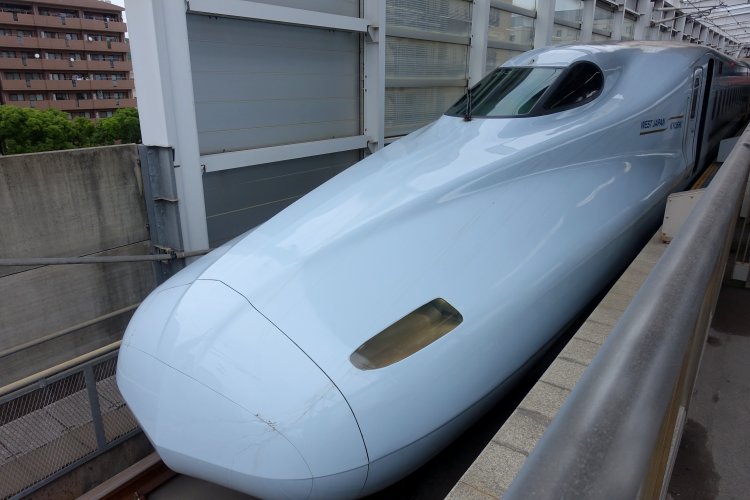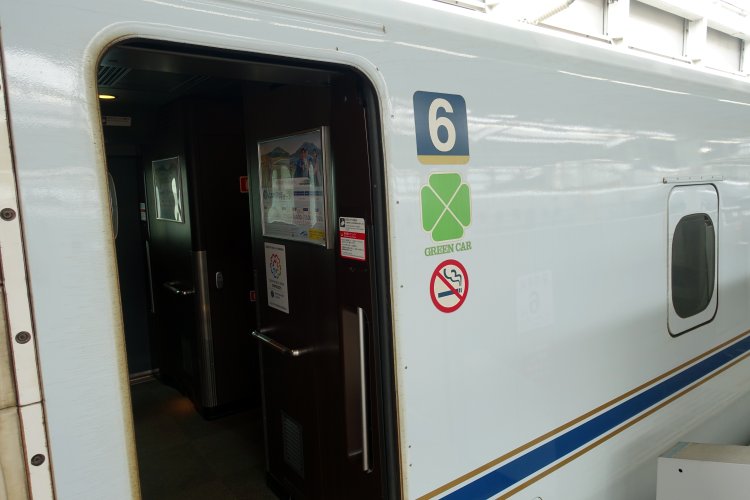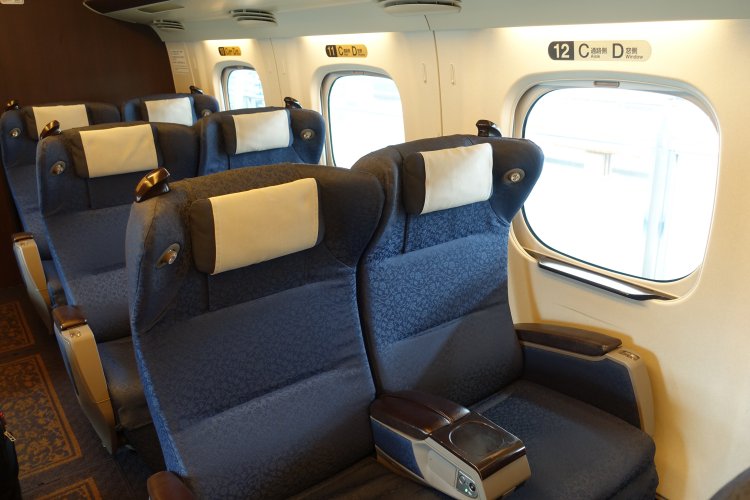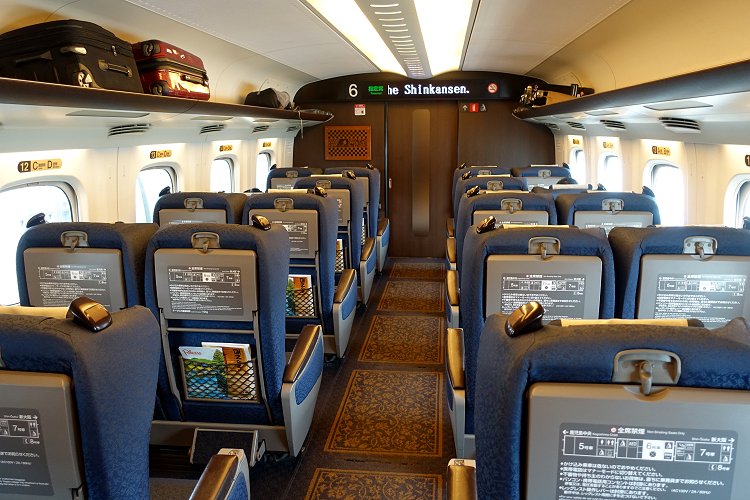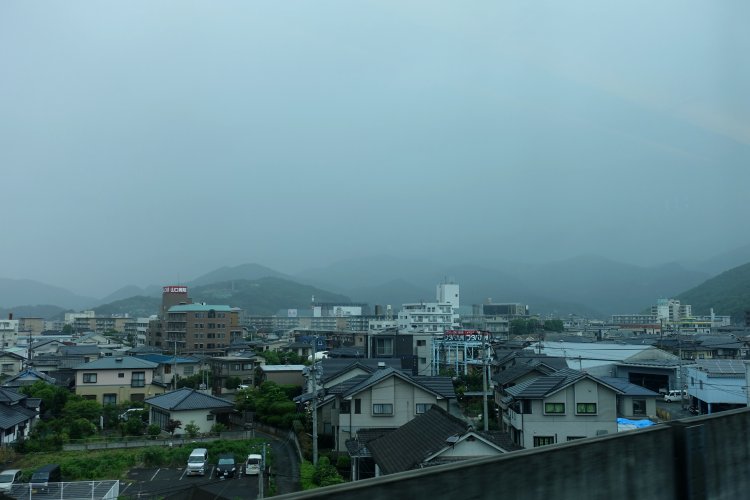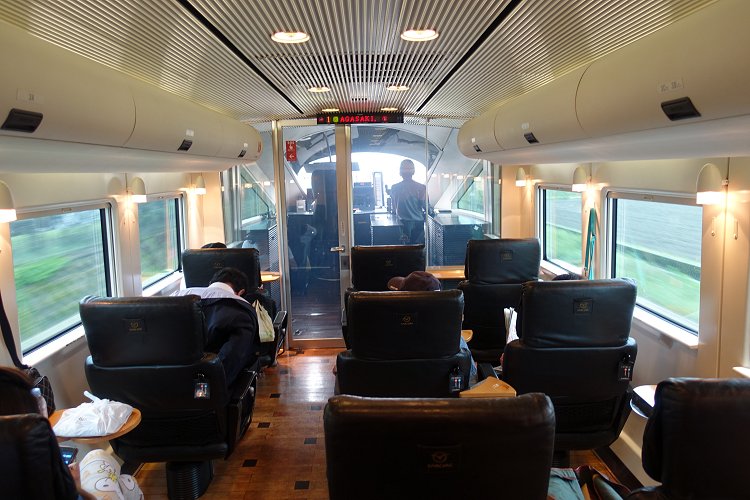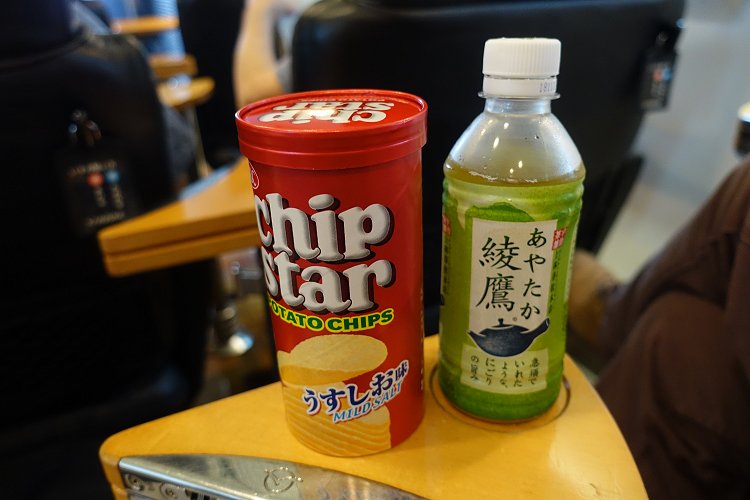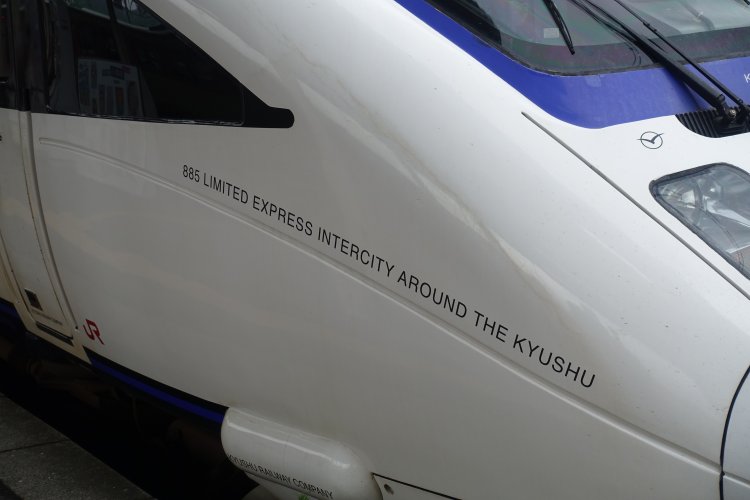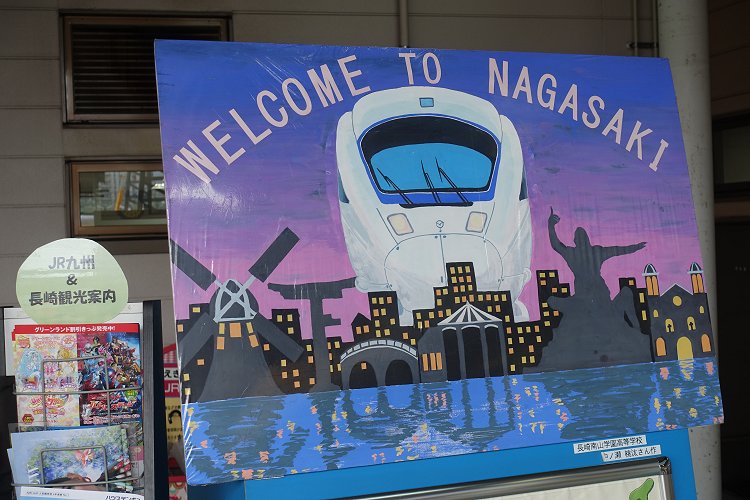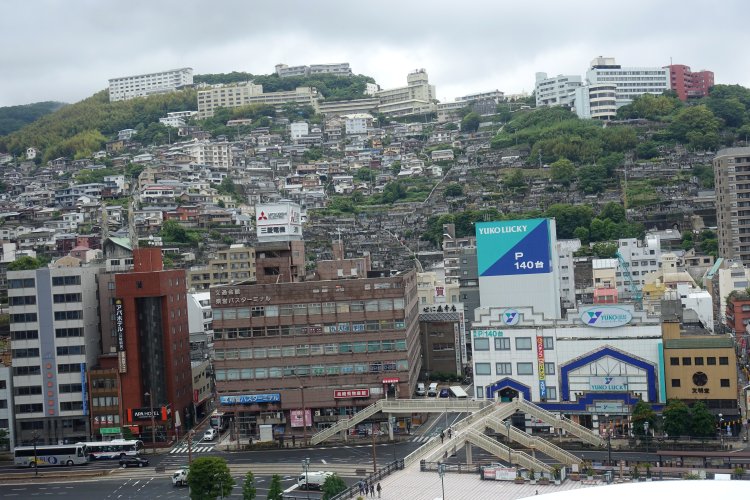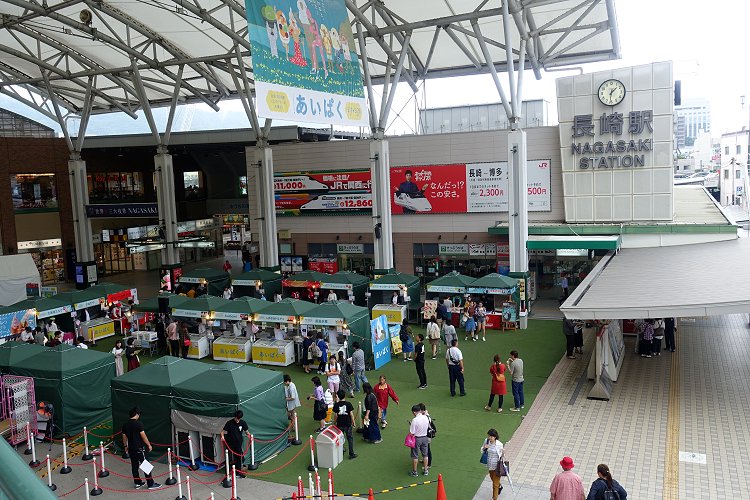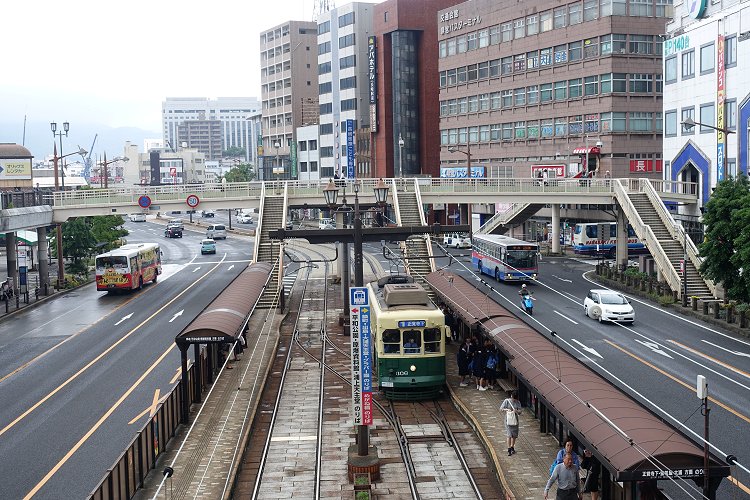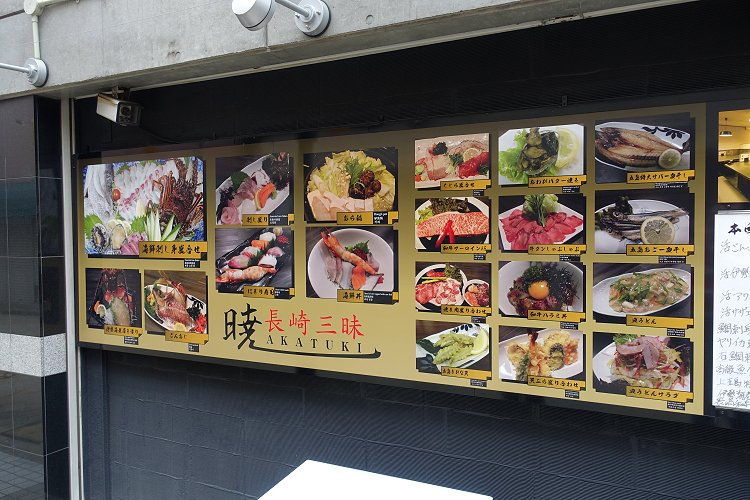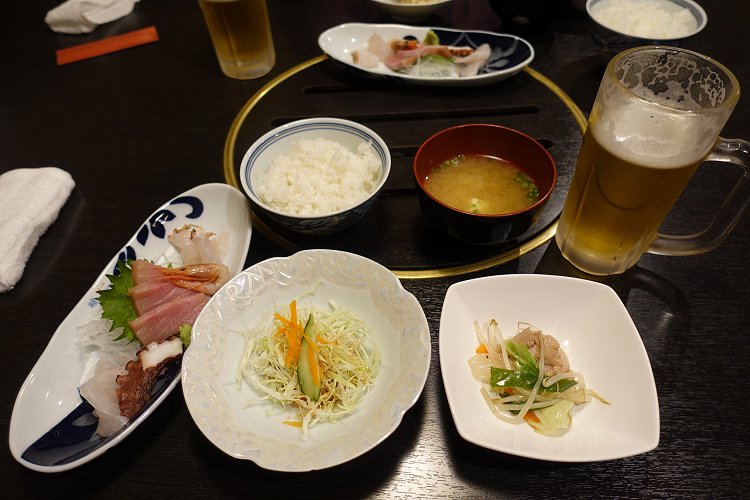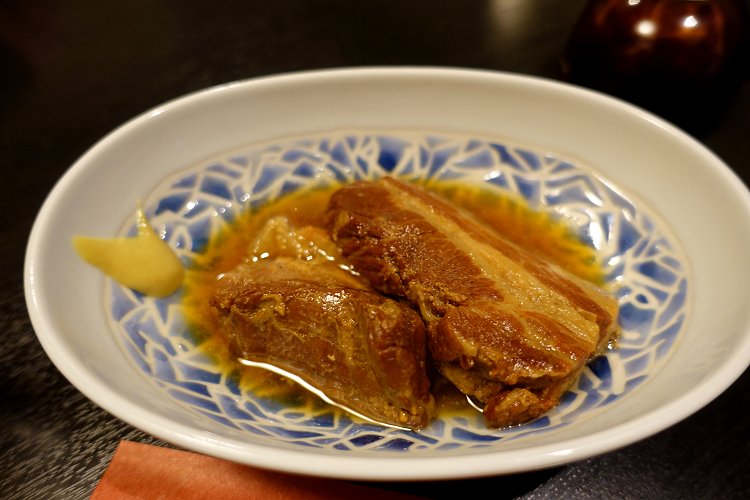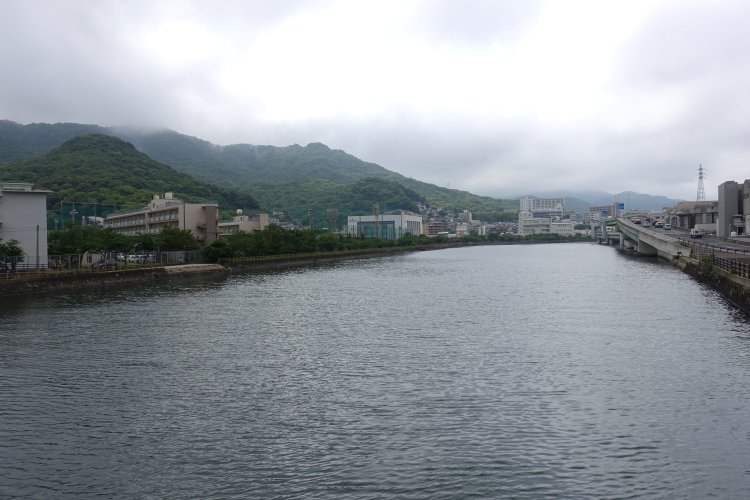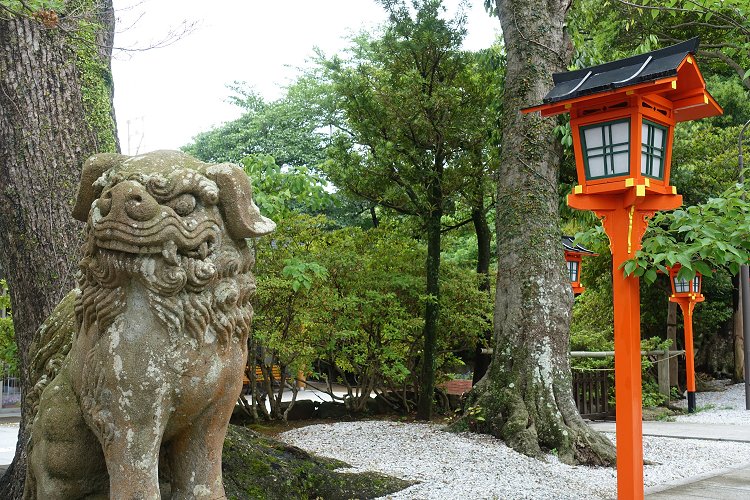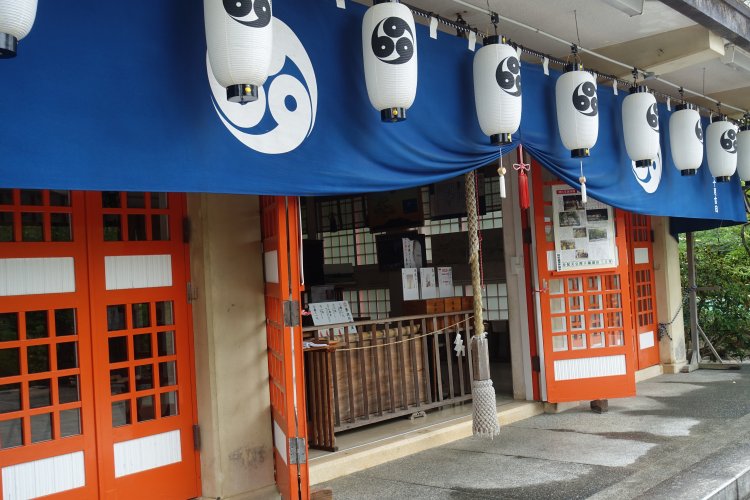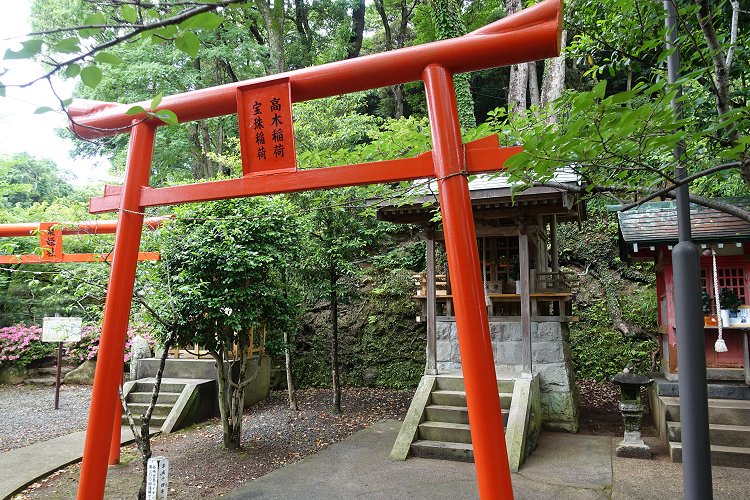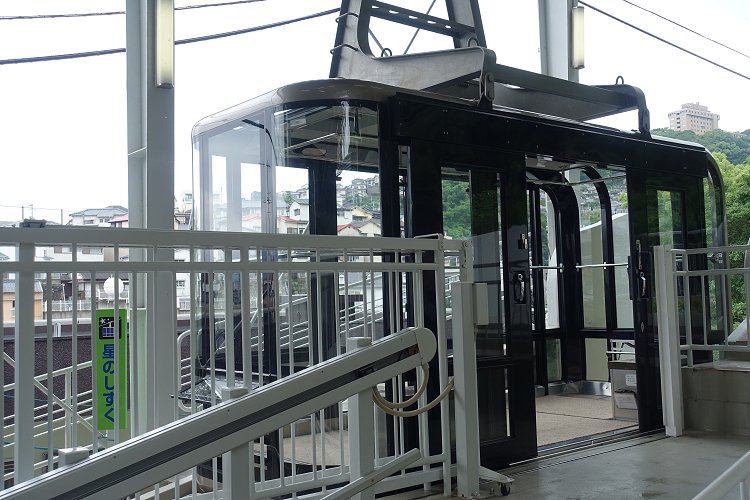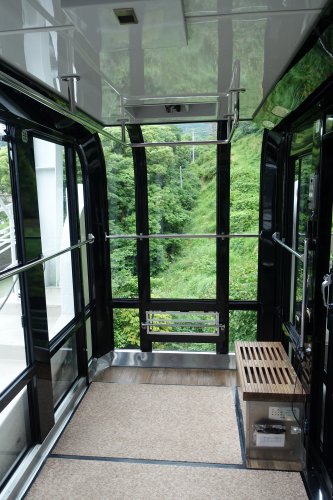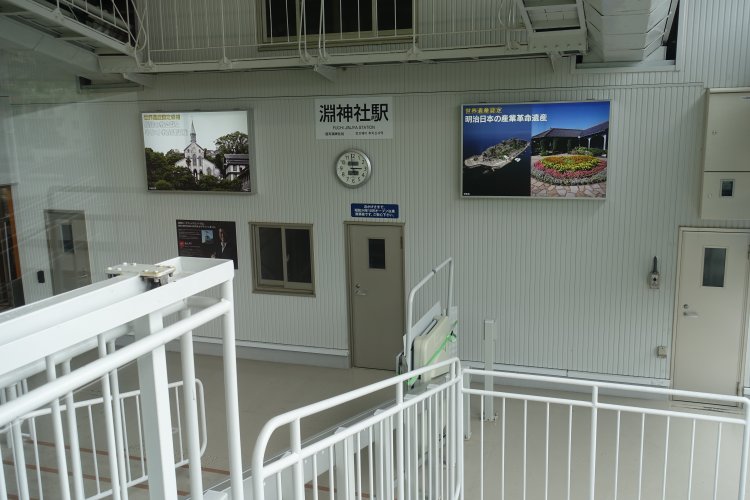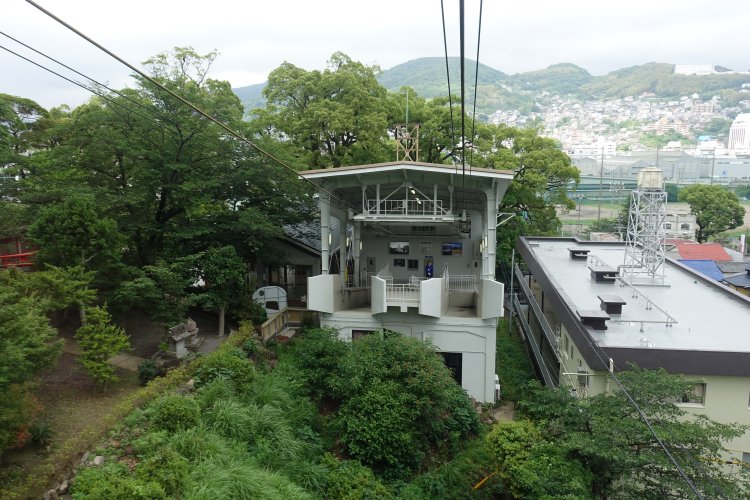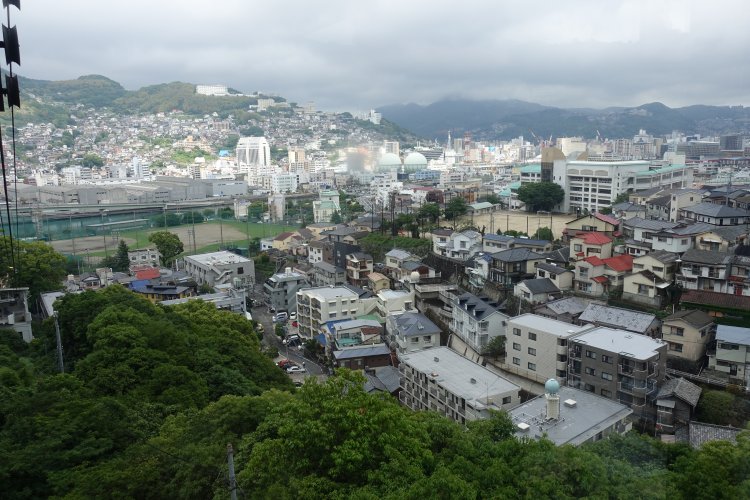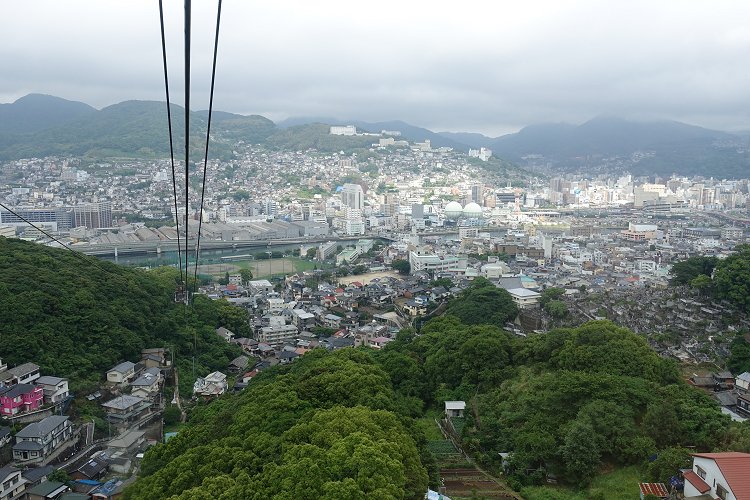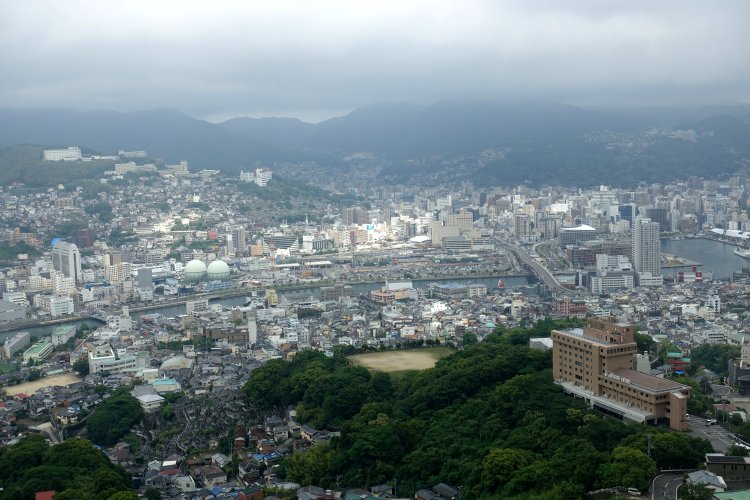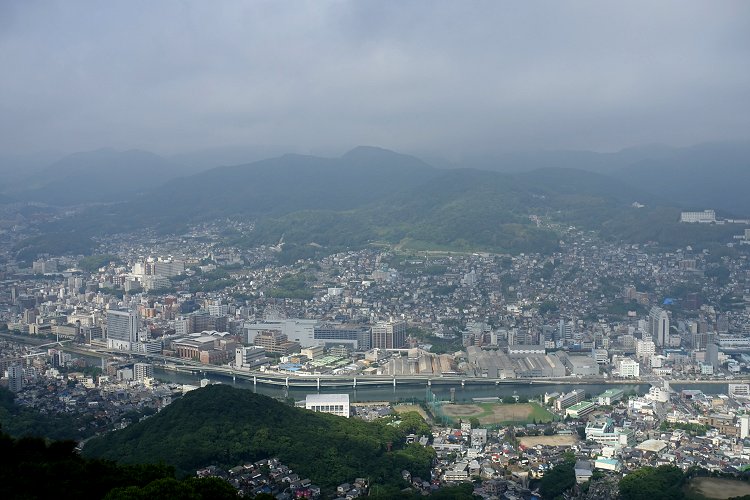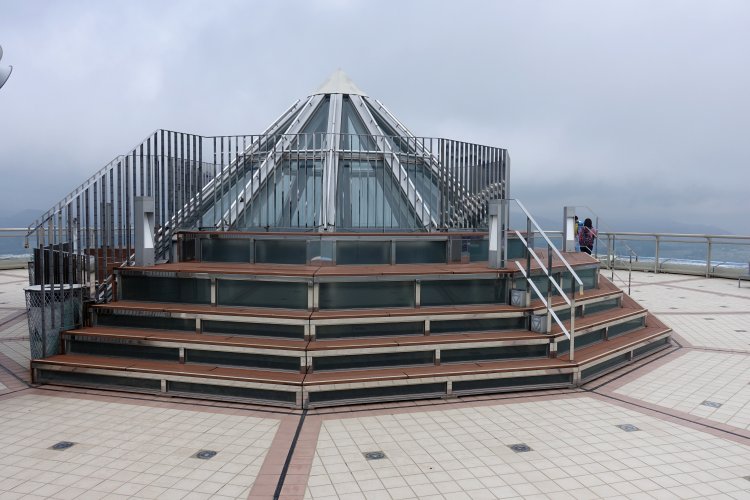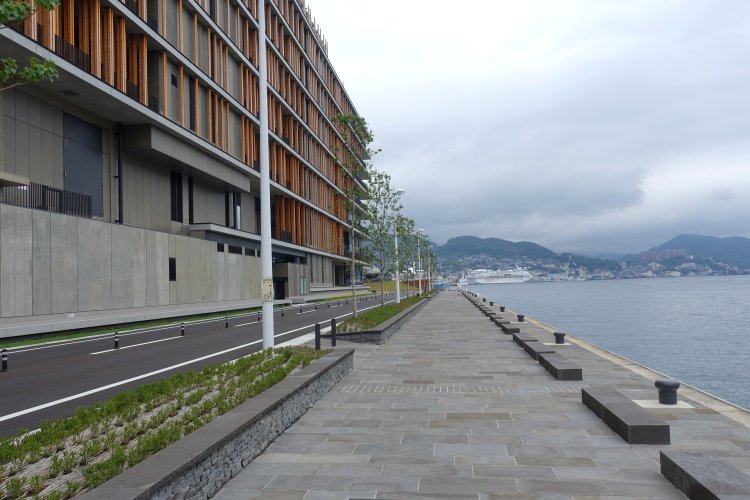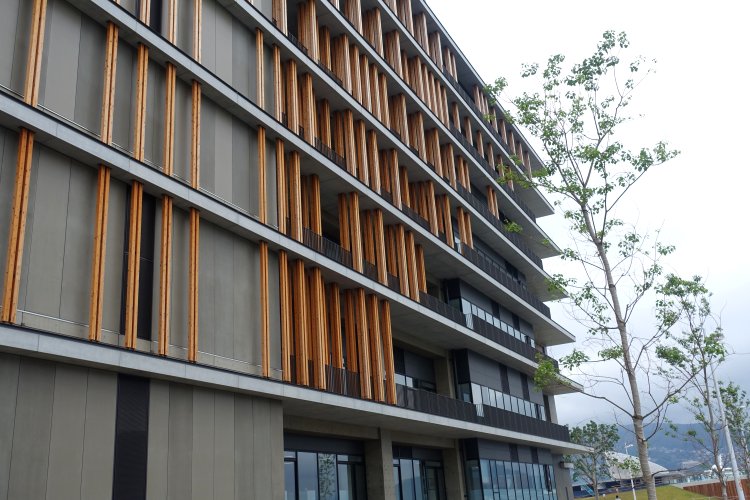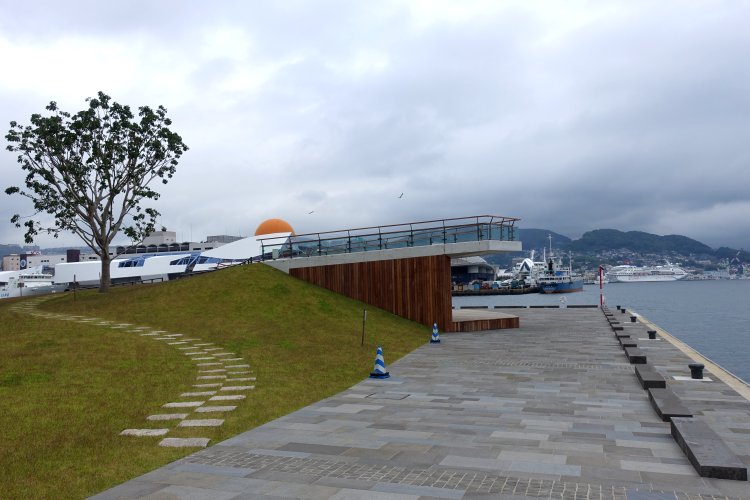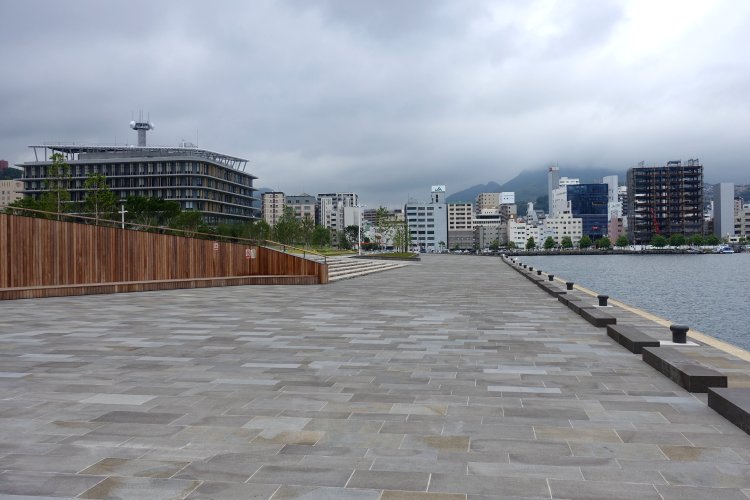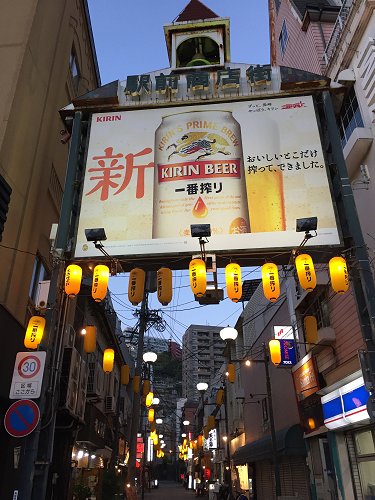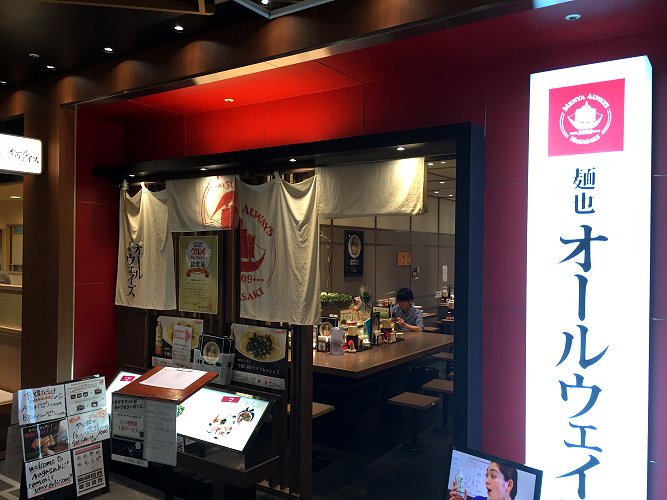Round The World and other travels
A frequent flyer's collection of trip diaries
This is: Japan 2018
Full speed ahead for Nagasaki
We awoke today to find that almost every surface in the room was covered in a thin layer of volcanic ash, those close to the windows being worst affected. We had to assume that our respiratory systems were likely to be similarly affected - the perils of travel!
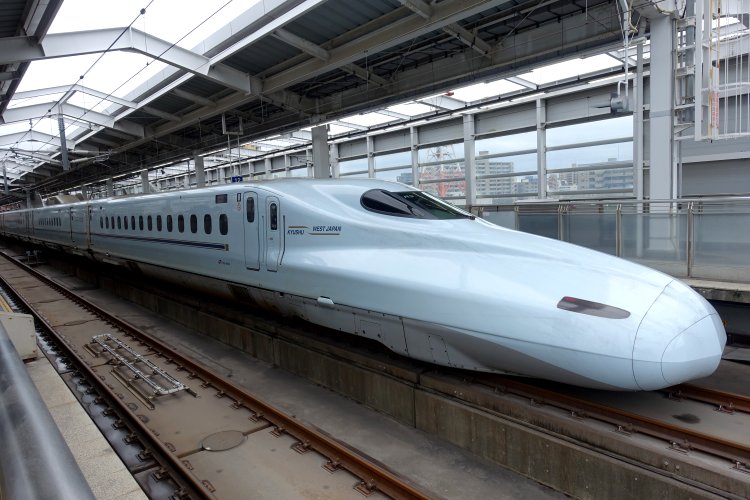 After finding an alternative coffee shop for
breakfast, following the previous day's disappointing experience, we packed and made sure we were ready in plenty of time
to catch the first leg of our two-part train journey to our next
destination, Nagasaki. For both of us, the initial leg was to be our
first experience of the Shinkansen, Japan's high-speed
train, still probably better known in the English-speaking world as
the 'Bullet Train'. Even before boarding, I was intrigued by the
leading vehicle's 'duck-billed platypus' appearance, undoubtedly so
designed for aerodynamic effect.
After finding an alternative coffee shop for
breakfast, following the previous day's disappointing experience, we packed and made sure we were ready in plenty of time
to catch the first leg of our two-part train journey to our next
destination, Nagasaki. For both of us, the initial leg was to be our
first experience of the Shinkansen, Japan's high-speed
train, still probably better known in the English-speaking world as
the 'Bullet Train'. Even before boarding, I was intrigued by the
leading vehicle's 'duck-billed platypus' appearance, undoubtedly so
designed for aerodynamic effect.
I was hugely impressed by the train's performance, attributable at least in part to the straight and level nature of the track: multiple tunnelled sections were very much the order of the day. The ride was exceptionally smooth, very quiet and stunningly fast. I managed to get a few photos, despite the high speed and poor weather.
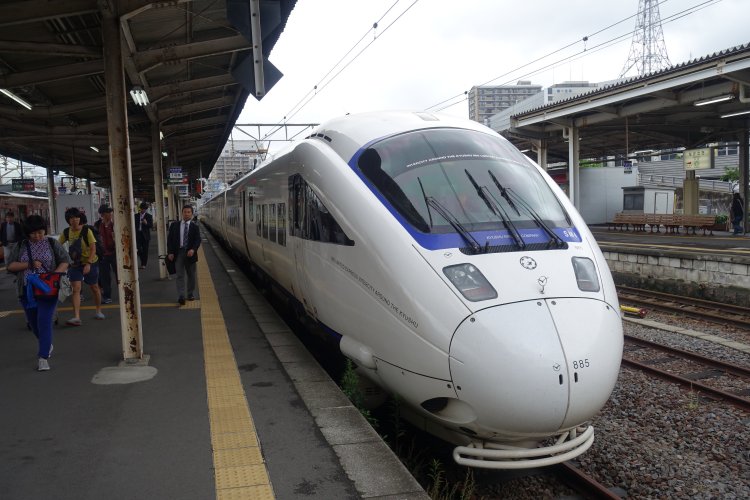 We changed trains at Shin-Tosu.
That's not a place; it's the new Shinkansen station in the
city of Tosu, located about half an hour from Fukuoka. (Had this
been France, it would have been called 'Tosu TGV'.) Our second train, while
certainly not a Shinkansen, was also technologically
impressive. Despite having a major city at either end, the line
between Fukuoka and Nagasaki often seems rural in character,and
twists and turns incessantly. In order to make the best of the
existing line, JR has deployed tilting trains on the route. Bruce
didn't care for the seats in the Green Car, which admittedly had
something of an 'office' feel. We both enjoyed the ability to see
through the driver's cab and out of the front windscreen, a feature
that was somewhat mysteriously lost when the train was stopped at a
station, when the inner partition automatically turned opaque. I was intrigued by
the way that the driver constantly pointed at signals, or anything
else that he was checking. We could only assume that his entire time
at the controls was being recorded on closed-circuit television.
We changed trains at Shin-Tosu.
That's not a place; it's the new Shinkansen station in the
city of Tosu, located about half an hour from Fukuoka. (Had this
been France, it would have been called 'Tosu TGV'.) Our second train, while
certainly not a Shinkansen, was also technologically
impressive. Despite having a major city at either end, the line
between Fukuoka and Nagasaki often seems rural in character,and
twists and turns incessantly. In order to make the best of the
existing line, JR has deployed tilting trains on the route. Bruce
didn't care for the seats in the Green Car, which admittedly had
something of an 'office' feel. We both enjoyed the ability to see
through the driver's cab and out of the front windscreen, a feature
that was somewhat mysteriously lost when the train was stopped at a
station, when the inner partition automatically turned opaque. I was intrigued by
the way that the driver constantly pointed at signals, or anything
else that he was checking. We could only assume that his entire time
at the controls was being recorded on closed-circuit television.
| Destination Facts: Nagasaki | |||||||||||||||
 |
|
||||||||||||||
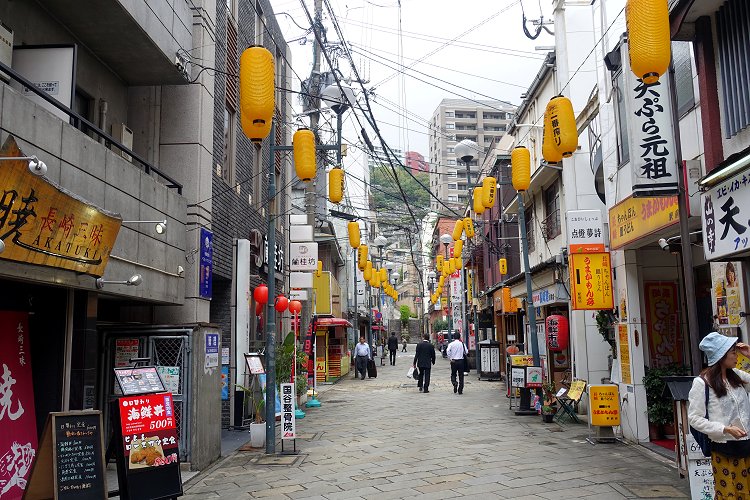 Our arrival in Nagasaki was precisely
on-schedule, at 1250. We expected simply to be dropping our bags off
at the hotel, but in the event were given immediate access to our
room. Intriguingly, an ice-cream festival was going on in the
station forecourt. From our room, we spotted what looked like a
'food street' across the main road and tram tracks, so we made our
way over there to seek out a slightly late lunch. Our search
concluded when we discovered a restaurant called Akatuki,
where we initially enjoyed a mixed offering of rice, sashimi,
vegetables, chicken, and miso soup, all washed down with beer.
Served a little later than the other items was a local speciality:
Nagasaki-style braised pork.
Our arrival in Nagasaki was precisely
on-schedule, at 1250. We expected simply to be dropping our bags off
at the hotel, but in the event were given immediate access to our
room. Intriguingly, an ice-cream festival was going on in the
station forecourt. From our room, we spotted what looked like a
'food street' across the main road and tram tracks, so we made our
way over there to seek out a slightly late lunch. Our search
concluded when we discovered a restaurant called Akatuki,
where we initially enjoyed a mixed offering of rice, sashimi,
vegetables, chicken, and miso soup, all washed down with beer.
Served a little later than the other items was a local speciality:
Nagasaki-style braised pork.
The plan for what remained of the afternoon was to make an ascent of Mount Inasa on the cable car, and take in the view of the city from the top. Despite the earlier poor weather and lingering mist, there were signs that conditions were improving, so we decided to cross our fingers and push ahead with the plan. We walked to the cable car base station, about 2km away on the opposite bank of the Uragami river. Much of the route was adjacent to the railway tracks, and we saw lots of work taking place in preparation for a planned extension of Shinkansen service to Nagasaki.
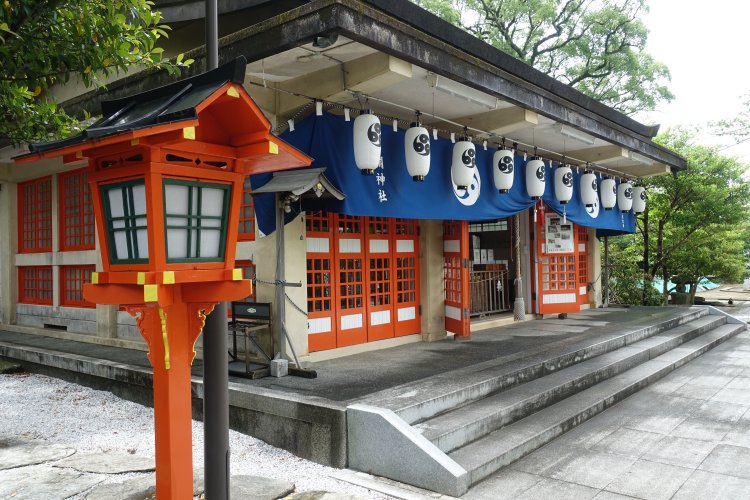
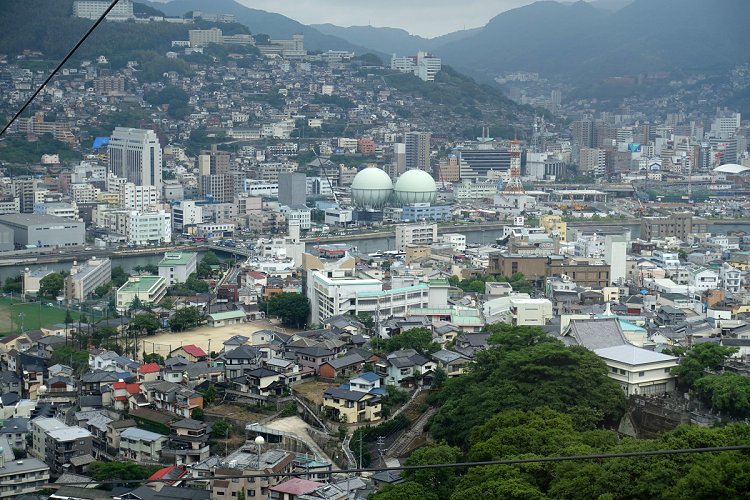 Finally
arriving at the cable car base station, we had time for a brief
visit to the adjacent Fuchi Shrine prior to making the ascent. It
looked as though we were going to be the only passengers for the
ascent, until we were joined at the last minute by a young German
from Berlin, who would later turn out to be a 'vlogger' - that's
video blogger, if you're not up to speed with
these things! Our gamble in making the journey paid off, and we were
rewarded with some fine views across the city and the surrounding
area.
Finally
arriving at the cable car base station, we had time for a brief
visit to the adjacent Fuchi Shrine prior to making the ascent. It
looked as though we were going to be the only passengers for the
ascent, until we were joined at the last minute by a young German
from Berlin, who would later turn out to be a 'vlogger' - that's
video blogger, if you're not up to speed with
these things! Our gamble in making the journey paid off, and we were
rewarded with some fine views across the city and the surrounding
area.
We had the cable car to ourselves for the descent. We walked back to our new base via a (deliberately) longer route, passing close to the hotel on the Uragami riverside walkway, then looping back to arrive at the station from the opposite direction.
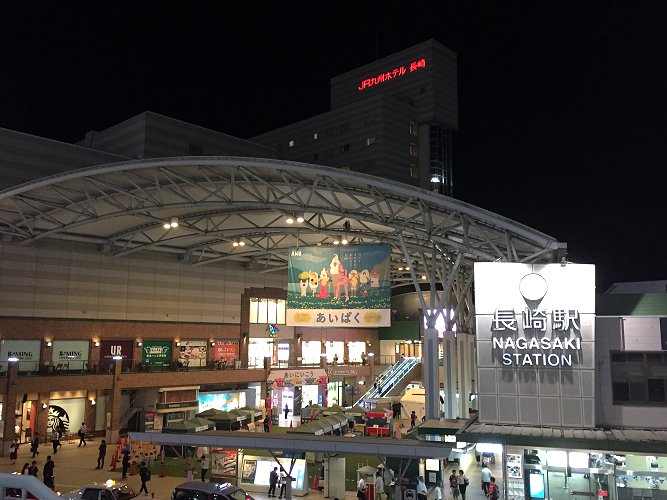 After a short rest, we set out in search of
pre-dinner drinks and found ourselves in the unlikely setting of an
Irish bar, somewhat unimaginatively named The Irish Pub. It
was a bit weird, being decorated with a mixture of Irish and
Scottish imagery. Our first drink, part of the 'Happy Hour'
promotion, was terrible - like a very
watery whisky and soda. I am ashamed to say that the cheap-tasting
spirit apparently hailed from Edinburgh.
After a short rest, we set out in search of
pre-dinner drinks and found ourselves in the unlikely setting of an
Irish bar, somewhat unimaginatively named The Irish Pub. It
was a bit weird, being decorated with a mixture of Irish and
Scottish imagery. Our first drink, part of the 'Happy Hour'
promotion, was terrible - like a very
watery whisky and soda. I am ashamed to say that the cheap-tasting
spirit apparently hailed from Edinburgh.
![]() Determined not to repeat the mistake, we then ordered 'Gimlet'
cocktails from the regular menu, and these turned out to be
excellent.
Determined not to repeat the mistake, we then ordered 'Gimlet'
cocktails from the regular menu, and these turned out to be
excellent.
Finally, we returned to the station mall in search of dinner. We opted for Menya Always, where the speciality was Ramen.


